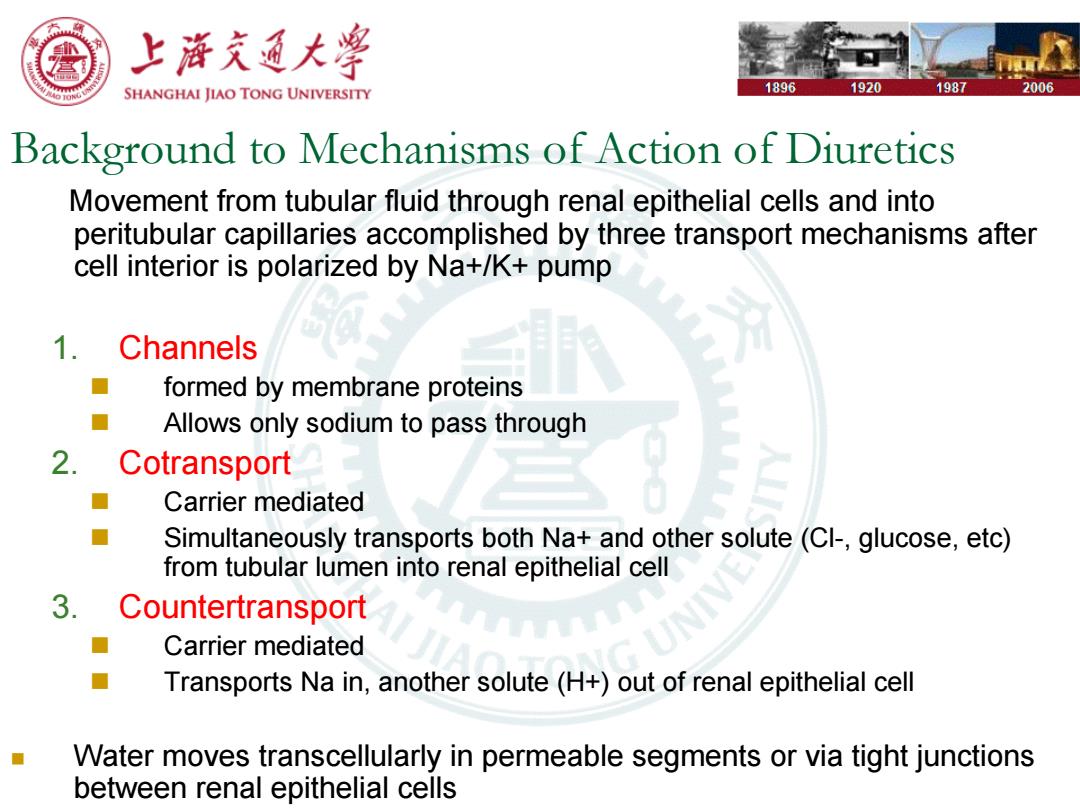正在加载图片...

上游充通大 SHANGHAI JIAO TONG UNIVERSITY 1896 1920 1987 2006 Background to Mechanisms of Action of Diuretics Movement from tubular fluid through renal epithelial cells and into peritubular capillaries accomplished by three transport mechanisms after cell interior is polarized by Na+/K+pump 1. Channels formed by membrane proteins Allows only sodium to pass through 2. Cotransport Carrier mediated Simultaneously transports both Na+and other solute(Cl-,glucose,etc) from tubular lumen into renal epithelial cell 3. Countertransport Carrier mediated Transports Na in,another solute(H+)out of renal epithelial cell Water moves transcellularly in permeable segments or via tight junctions between renal epithelial cellsBackground to Mechanisms of Action of Diuretics Movement from tubular fluid through renal epithelial cells and into peritubular capillaries accomplished by three transport mechanisms after cell interior is polarized by Na+/K+ pump 1. Channels formed by membrane proteins Allows only sodium to pass through 2. Cotransport Carrier mediated Simultaneously transports both Na+ and other solute (Cl-, glucose, etc) from tubular lumen into renal epithelial cell 3. Countertransport Carrier mediated Transports Na in, another solute (H+) out of renal epithelial cell Water moves transcellularly in permeable segments or via tight junctions between renal epithelial cells